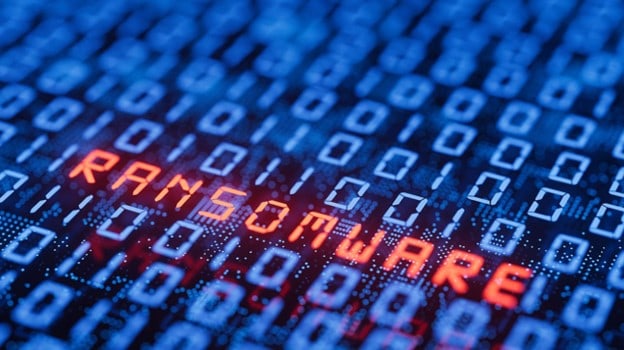New Tape-as-a-Service from Geyser Data Delivers Benefits of Tape in a Cloud Based Subscription Model

Executive Q & A with
Nelson Nahum,
CEO of Geyser Data

Q1: Welcome Nelson to this Fujifilm Insights Blog Executive Q & A! Please tell us about Geyser Data’s new tape-as-a-service model and your role and responsibility as CEO.
Ans: Thank you for having me, Rich. Let me begin with my story on why we created Geyser Data. In a world now forever changed by AI, extracting value from data has become easier than ever before. At the same time the rate of creation of new data is explosive, so we need to look at tape as a great solution for certain storage workloads. Tape is low-cost media, it requires minimal power and it can be protected from cybersecurity threats by simply air gapping it. However, historically tape lost ground to hard disks because tape libraries were difficult to manage and required a lot of capex to buy them. At Geyser Data, this is what we solve, people can use tape-as-a service, without the need to buy and manage tape libraries. And it can be used with the simplicity of S3 APIs and on a pay per month subscription model.
Q2: Your most recent background prior to Geyser Data is with Zadara. What was your role there and how did that experience help establish your vision for Geyser Data?
Ans: I co-founded Zadara and ran it for many years until we reached a substantial size with more than 500 cloud locations. At Zadara we pioneered “On premise-as-a-service-storage”. Although Geyser is a different type of storage, my experience allowed me to bring this new idea to light very fast, hire a magnificent team, and build the strategic partnerships necessary to be successful.
Q3: Tape can currently be consumed in a cloud model by simply engaging some of the well-known deep archive cloud service providers. What makes Geyser Data different?
Ans: The reason we called the company Geyser is because we allow the user to extract the hot value of the data underneath the glacier; to that extent, some of the critical difference with Geyser and the cold archive tier of the cloud providers are that we don’t charge egress fees nor retrieval fees, so there is a substantial cost savings. Our “Cloud Tape Libraries” have dedicated tapes per user, so the user knows even the barcodes of their tapes and can ask to have the tapes returned to them. Our Cloud Tape Libraries can be “air gapped” for cyber protection and “remounted” instantly when needed. In addition, our Cloud Tape Libraries are multi cloud, so they can be connected to the traditional cloud to copy the data for further processing in the cloud. In short, there are many differences, our Cloud Tape Libraries are really good for people that want to use the data from time to time and those that want to make sure they are in control of their own data. They also want to save money, that is always a key motivator!
Q4: Tell us about your go to market strategy and who are your target customers?
Ans: Our go to market strategy is via the reseller channel. We have two types of customers, the customers that use tape on premise today and want to move to the cloud or have DR in the cloud. The other target customers are customers that don’t use tape today. But they have workloads like archive or active archive and others in disk or cloud storage. Now, they can easily use Geyser Data with the same S3 interface and save a lot of money.
Q5: What are your plans beyond the U.S. market
Ans: We are definitely building a global Cloud Archive, we have multiple international partners that are ready to go. We will start making announcements soon, probably even before of the end of the year and in early 2025.
Q6: What are you seeing in the world of data storage that is creating the need for this service offering?
Ans: Cold data is 70% of all data. But cold data becomes “warmer” when you really want to extract value from it. I believe there is not enough manufacturing capacity of disk drives to store all the data that customers want to store. There would not be enough IT budget or energy available either! By making tape easier to use, I believe tape will have a much more prominent role as the demand for long term massive storage continues to explode.
Q7: I understand you have had a successful launch within Digital Realty. What makes tape-as-a-service attractive to co-location data center service providers?
Ans: As I mentioned before tape is very low power and availability of energy is a big concern for colos especially as AI deployments increase. The Spectra Logic Cube library that we use, can store 30PBs using only 1.2 kW, an insignificant amount compared to equivalent HDD storage! Also, tape is much denser than hard disk, so it consumes less floor space too. Finally, Digital Realty has this amazing network fabric that interconnects more than 700 data centers. Any customer of these data centers can establish a private connection today to Geyser Cloud Tape Libraries with just a few clicks.

Q8: Finally, when you are not slaving away for Geyser Data, what do you enjoy doing in your free time?

Ans: I love Formula 1 racing, I love watching soccer and I’m really excited for the upcoming World Cup in the U.S.!
Thanks for your time, Nelson, and we wish you a lot of success with Geyser Data’s innovative tape-as-a-service solution!
Check out Geyser Data’s website for more info!




 The 17th annual edition of the Flash Memory Summit (
The 17th annual edition of the Flash Memory Summit ( There are a plethora of studies and reports on cyber security and ransomware out in the marketplace, but I always enjoy reading and respect the findings of Jason Buffington, VP of Market Strategy at Veeam and his team. Their recently released 2023 Global Report on Ransomware Trends details lessons learned from 1,200 ransomware victims in 2022. You will want to download the full report
There are a plethora of studies and reports on cyber security and ransomware out in the marketplace, but I always enjoy reading and respect the findings of Jason Buffington, VP of Market Strategy at Veeam and his team. Their recently released 2023 Global Report on Ransomware Trends details lessons learned from 1,200 ransomware victims in 2022. You will want to download the full report 





